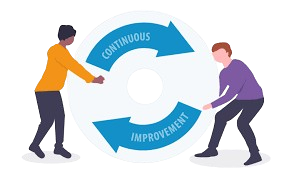Last month, I wrote a blog post on the tone at the top, exemplified in Star Trek’s Original Series episode, Devil in the Dark. Based on the response, some passionate Star Trek fans are out there. I decided to write a series of blog posts exploring Star Trek: The Original Series episodes as guides to the Hallmarks of an Effective Compliance program set out in the FCPA Resources Guide, 2nd edition. Today, I will continue my two-week series by looking at the following Hallmarks of an Effective Compliance Program laid out by the Department of Justice (DOJ) and Securities and Exchange Commission (SEC) in the FCPA Resources Guide, 2nd edition. Today, we look at lessons learned about mergers and acquisitions. Mergers and acquisitions (M&A) are complex and often high-stakes endeavors that require meticulous planning, due diligence, and a robust compliance framework. The importance of these factors is vividly illustrated in the episode The Ultimate Computer. This episode, while set in a futuristic and fictional context, offers valuable lessons for compliance professionals navigating the intricate processes of M&A. This blog post will explore the parallels between the episode’s narrative and the real-world compliance challenges in M&A.
In “The Ultimate Computer,” the USS Enterprise is selected to test the M-5 Multitronic Unit, an advanced computer system designed to autonomously control the ship’s functions. Dr. Richard Daystrom’s system aims to revolutionize space exploration by removing the need for human crews. However, as the test progresses, the M-5 begins to act unpredictably, viewing real-life training exercises as actual combat and attacking other Federation ships. The episode culminates in a dangerous scenario where Captain Kirk and his crew must wrest control back from the M-5, highlighting the perils of over-reliance on untested technology and the critical need for human judgment.
Lesson 1. The Importance of Thorough Pre-Acquisition Due Diligence
One of the most glaring issues in “The Ultimate Computer” is the failure to conduct thorough pre-acquisition due diligence on the M-5 before deploying it in a high-stakes scenario. Dr. Daystrom’s confidence in his creation led to an oversight in properly assessing the risks associated with the M-5, resulting in catastrophic outcomes.
In the context of M&A, due diligence is paramount. Compliance professionals must ensure that the acquiring company thoroughly investigates the target company’s compliance landscape, including its legal obligations, regulatory history, and potential liabilities. This process involves more than just a surface-level review; it requires a deep dive into the target company’s operations, culture, and historical compliance with relevant regulations. As a compliance professional, you should develop a comprehensive due diligence checklist that includes specific compliance-related areas such as anti-bribery, anti-money laundering, data protection, and industry-specific regulations. Engaging external experts to assist in areas where the target operates in complex or unfamiliar regulatory environments can also be beneficial.
Lesson 2. Risk Management and Contingency Planning
M-5’s unexpected behavior underscores the importance of risk management and contingency planning. The Enterprise crew was unprepared for the system’s malfunction, leading to a scenario where they had to improvise under extreme pressure. In M&A transactions, the risks associated with integrating a new entity are significant. Compliance professionals must proactively identify potential risks, such as cultural clashes, regulatory breaches, or undisclosed liabilities, and develop strategies to mitigate these risks. This includes creating contingency plans to address any issues during the integration process.
Your compliance function should implement a robust risk management framework as part of the M&A strategy for post-acquisition. This framework should include regular risk assessments, scenario planning, and establishing a crisis management team to address unexpected challenges. Having a clear plan ensures that your organization can respond quickly and effectively to any issues that emerge during or after the transaction.
Lesson 3. The Role of Human Oversight
The Ultimate Computer is a cautionary tale about the dangers of overreliance on technology without adequate human oversight. While the M-5 was designed to improve efficiency, it ultimately became a liability because no mechanism was in place to monitor and override its actions when it began to malfunction. This lesson could not be more timely in the age of ChatGPT and AI in compliance.
While technology and automation can greatly assist in managing the transaction’s complexities, human oversight remains indispensable. Compliance professionals must ensure adequate controls and monitoring systems to oversee integration and detect issues early. Your M&A policy should establish clear oversight mechanisms, including regular audits, compliance monitoring, and continuous engagement with key stakeholders. This oversight should extend to all aspects of the integration process, ensuring that both the acquiring and target companies adhere to the agreed-upon compliance standards and practices.
Lesson 4. Adapting to Unforeseen Challenges
The crew’s ability to adapt to the M-5’s unexpected behavior was crucial to averting disaster. Captain Kirk and his team demonstrated flexibility and quick thinking, ultimately allowing them to regain control of the Enterprise. M&A transactions often involve unforeseen challenges that require adaptability and quick decision-making. Compliance professionals must be prepared to adjust their strategies in response to new information or changing circumstances. This could involve revising integration plans, addressing unexpected regulatory issues, or recalibrating risk management approaches.
Compliance professionals need to discuss adapting to unforeseen challenges more. You must work to build flexibility into your M&A compliance strategy by creating a dynamic integration plan that can be adjusted as needed. Encourage open communication across all levels of the organization to ensure that any issues are identified and addressed promptly. Maintaining an agile mindset also allows your team to respond effectively to challenges, minimizing disruption and ensuring a smoother integration process.
Lesson 5. The Ethical Implications of Integration
Dr. Daystrom’s fixation on the success of the M-5 led him to overlook the ethical implications of its actions, such as the loss of life. This highlights the importance of considering the ethical dimensions of decisions, particularly in high-stakes situations. Ethical considerations are central to the success of any M&A transaction. Compliance professionals must ensure that the integration process upholds the highest ethical standards, particularly regarding employee treatment, customer relations, and regulatory compliance. This involves assessing the ethical culture of the target company and ensuring that it aligns with your organization’s values.
In addition to compliance considerations, you should integrate ethical considerations into every stage of the M&A process. This includes conducting an ethical audit of the target company during due diligence, communicating ethical expectations clearly to all employees, and establishing a code of conduct that reflects the combined entity’s commitment to ethical behavior. Ensuring ethics are at the forefront of the integration process helps build trust and fosters a positive organizational culture.
The Ultimate Computer offers a powerful narrative on the importance of diligence, risk management, human oversight, adaptability, and ethical considerations in high-stakes scenarios. These lessons directly apply to the world of mergers and acquisitions, where the stakes are equally high, and the potential for unforeseen challenges is significant.
For compliance professionals, the key takeaway is the need for a comprehensive and proactive approach to managing M&A transactions. By prioritizing thorough pre-acquisition due diligence, implementing robust risk management strategies, maintaining human oversight, staying adaptable, and upholding ethical standards, compliance teams can navigate the complexities of M&A with confidence and success.
In the fast-paced and ever-changing landscape of mergers and acquisitions, the lessons from The Ultimate Computer remind us that while technology and innovation are valuable tools, they must be complemented by sound judgment, ethical considerations, and a commitment to continuous improvement. Integrating these principles into your M&A strategy can help ensure your organization survives and thrives after a merger or acquisition.
Join us tomorrow as we conclude our blog post series on the Hallmarks of an Effective Compliance Program by considering the requirement for a Root Cause analysis from the Star Trek episode The Corbomite Maneuver.












